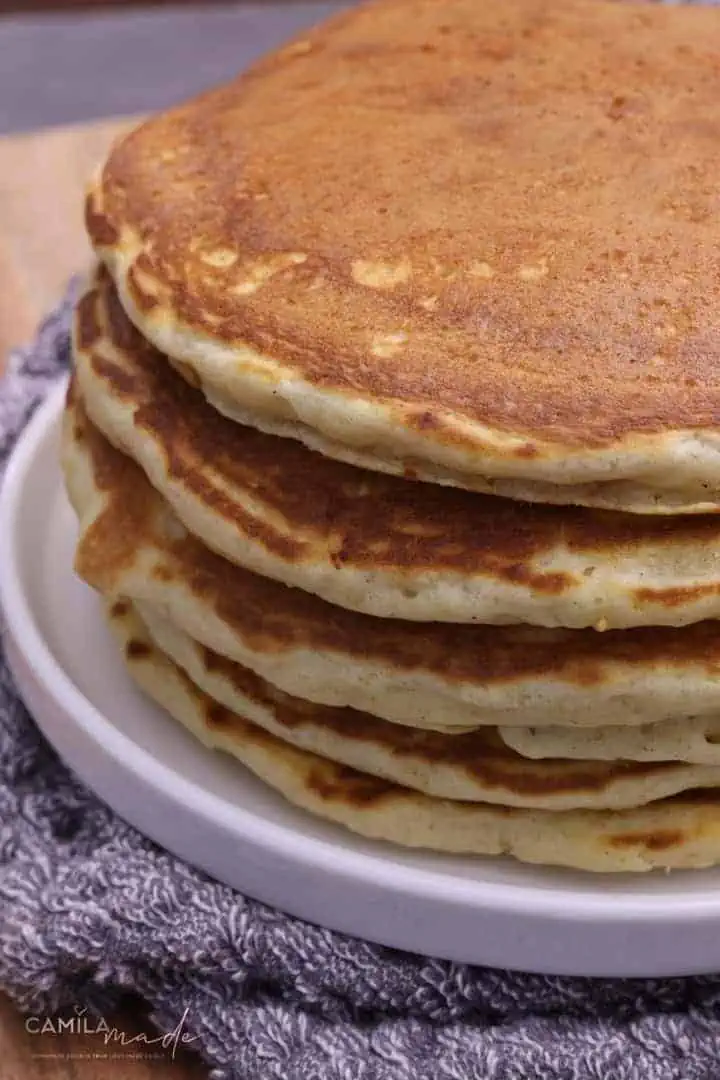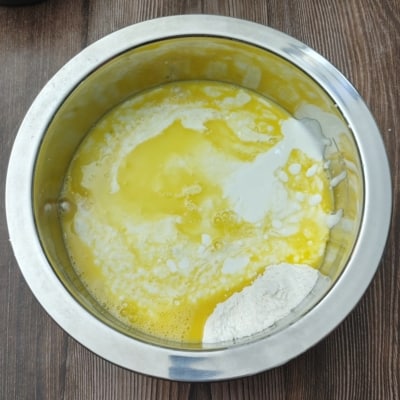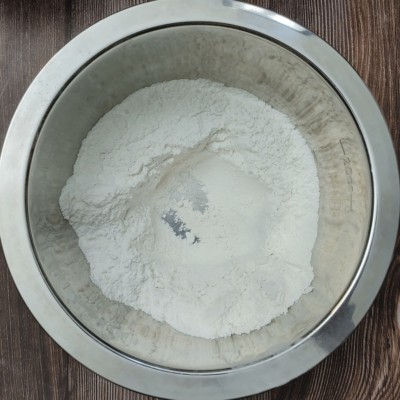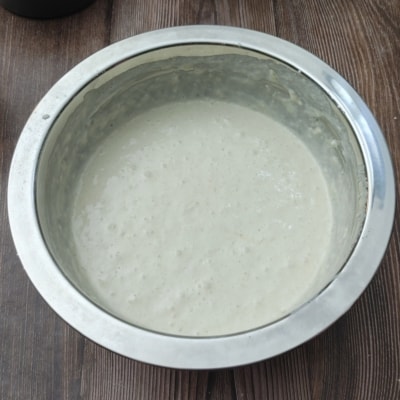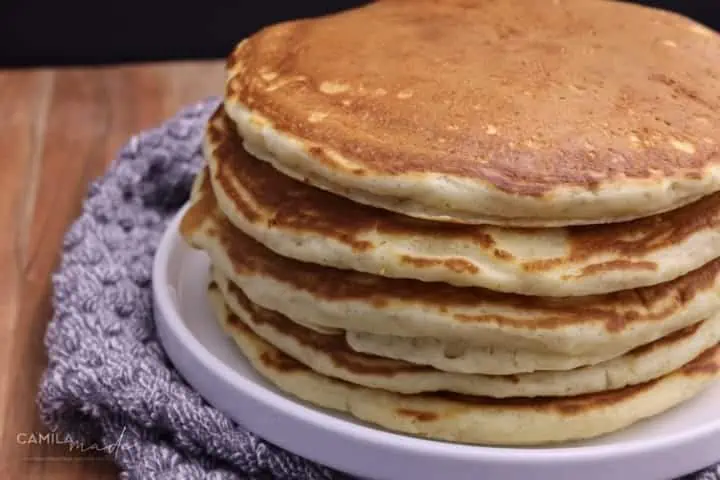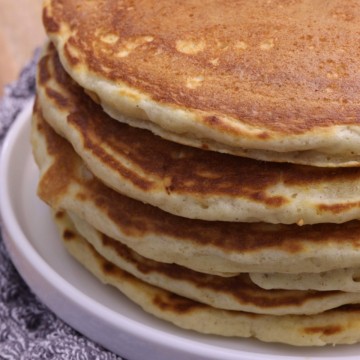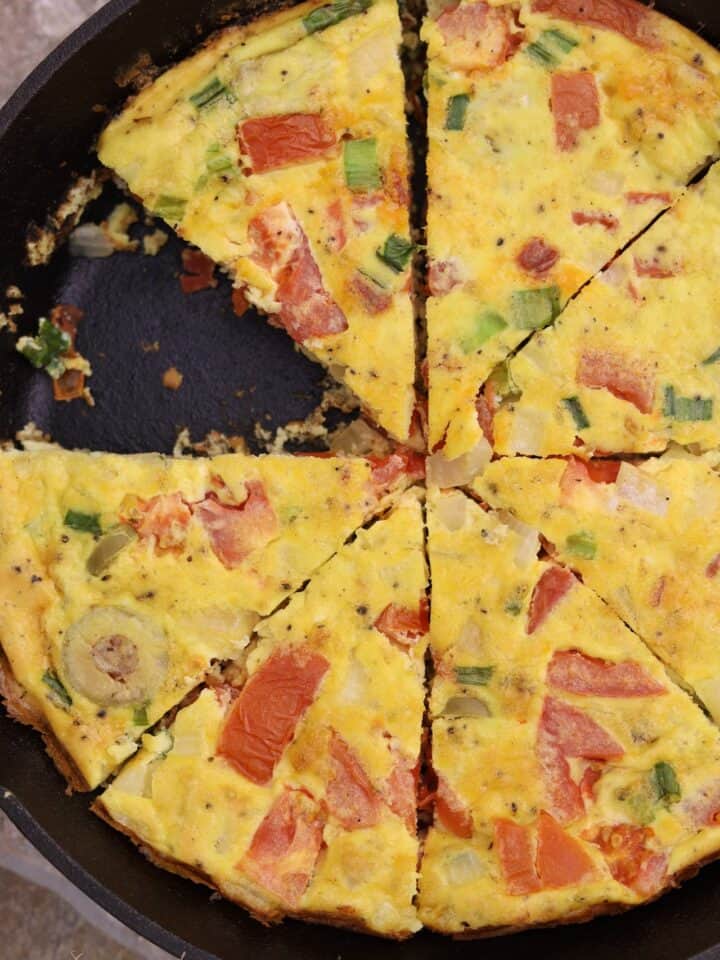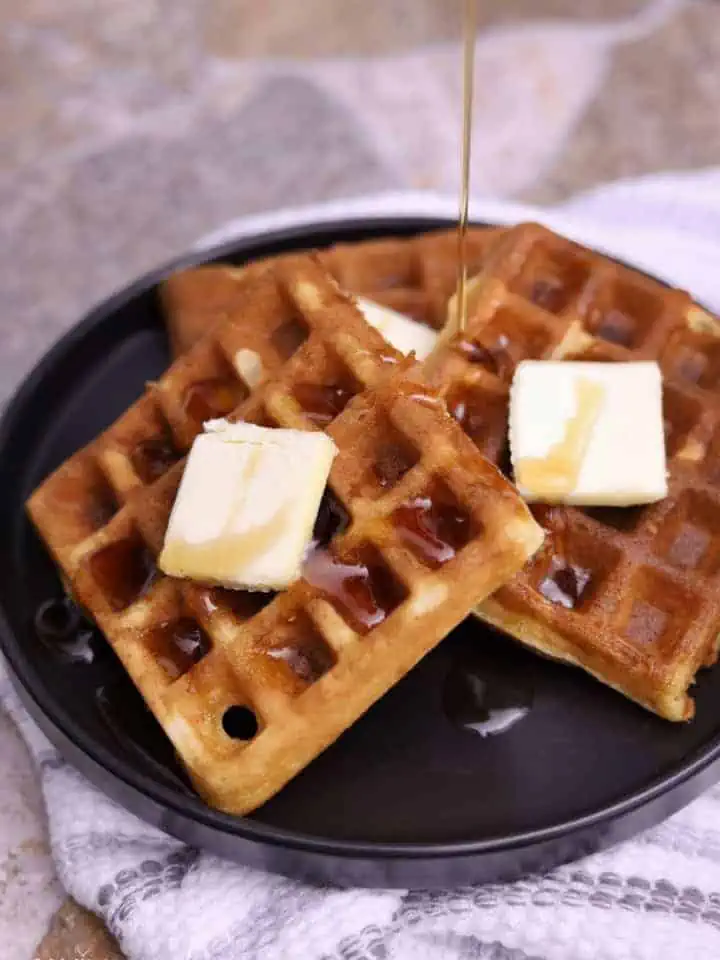Pancakes are a timeless favorite for breakfast, brunch, and even breakfast-for-dinner. They offer versatility in presentation, whether served in a towering stack or enjoyed one by one straight from the pan.
This pancake recipe is ideal for weekend mornings or brunch gatherings. It's simple, satisfying, and sure to be a crowd-pleaser. For more Easy Pancake variations recipes, check out these Blueberry pancakes, Buttermilk Pancakes, and Banana Pancakes.
How to Make Pancakes
Note: The full instructions are provided in the recipe card below.
In a large bowl, whisk the flour, baking powder, sugar, cinnamon, and salt. In a separate medium bowl, whisk together the milk, vanilla extract, and eggs. Add the wet ingredients along with the melted butter to the dry ingredients. Gently whisk until just combined but still lumpy- don't overmix; small flour lumps are okay; set aside for 10 minutes.
Heat a drizzle of vegetable oil or clarified butter (like ghee—regular butter will burn; I like to use Avocado oil) on a non-stick skillet over medium heat, then reduce heat to medium-low to avoid scorching your first round.
Using a ½ measuring cup, ladle pancake batter into rounds; use the back of the cup to help spread them out evenly. Cook until pancakes are firming up around the edges and little bubbles appear on the batter's top side, about 3 to 4 minutes.
Flip to the second side, and cook until golden brown, adjusting heat as needed, about 1 to 2 more minutes. Repeat with the remaining batter, greasing the pan with additional butter or oil if too dry. Serve these Fluffy pancakes with a drizzle of pancake syrup, honey or maple syrup.
Related Recipes:
- Chinese Scallion Pancakes
- Cheesy Corn Pancakes
- Blueberry Buttermilk Pancakes
- Buttermilk Pancakes
- Banana Pancakes
Recipe
Easy Pancakes
Ingredients
- 312 g (2-½ cups) of all-purpose flour, spooned, leveled off with the back of a knife
- 1-½ tablespoons baking powder or 2 tablespoons for even fluffier pancakes
- ½ teaspoon kosher salt
- ¼ cup granulated sugar or powdered sugar
- 1-¾ cups whole milk
- 2 large eggs, room temperature , beaten
- 4 tablespoons unsalted butter or shortening , melted and cooled
- 3 teaspoons pure vanilla extract or clear vanilla
- ¼ teaspoon ground cinnamon
- Avocado oil, shortening or cooking spray as needed
Instructions
- In a large bowl, whisk the flour, baking powder, sugar, cinnamon, and salt. In a separate medium bowl, whisk together the milk, vanilla extract, and eggs. Add the wet ingredients along with the melted butter to the dry ingredients. Gently whisk until just combined but still lumpy- don't overmix; small flour lumps are okay.
- Heat a drizzle of vegetable oil or clarified butter (like ghee—regular butter will burn; I like to use Avocado oil) on a non-stick skillet over medium heat, then reduce heat to medium-low to avoid scorching your first round.
- Using a ½ measuring cup, ladle pancake batter into rounds; use the back of the cup to help spread them out evenly. Cook until pancakes are firming up around the edges and little bubbles appear on the batter's top side, about 3 to 4 minutes.
- Flip to the second side, and cook until golden brown, adjusting heat as needed, about 1 to 2 more minutes. Repeat with remaining batter, greasing the pan with additional butter or oil if too dry. Serve with a drizzle of honey or maple syrup.
Notes
All nutritional information is based on third-party calculations and is only an estimate. Each recipe and nutritional value will vary depending on the brands you use, measuring methods, and portion sizes per household.
